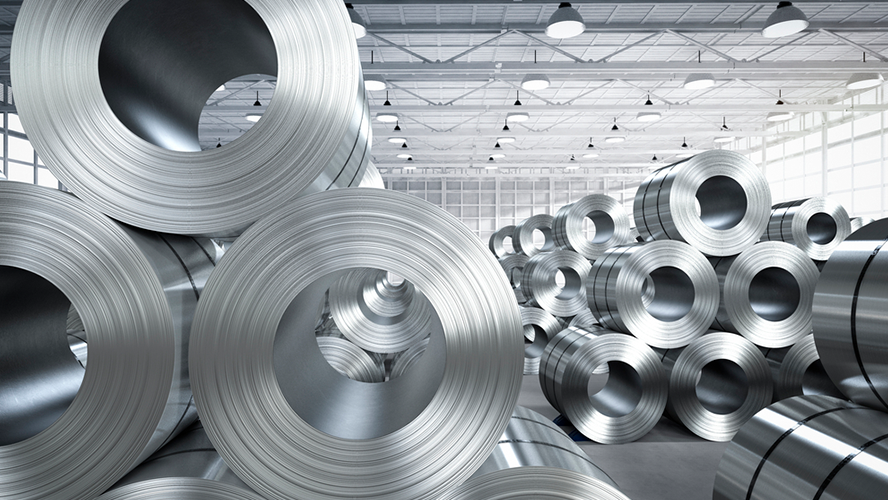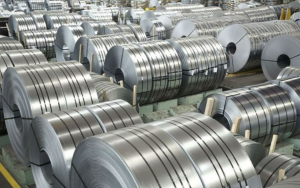Introduction to the performance of 304 stainless steel
304 stainless steel is the most common type of steel. As a widely used steel, it has good corrosion resistance, heat resistance, low temperature strength and mechanical properties; it has good hot workability such as stamping and bending, and no heat treatment hardening phenomenon (non-magnetic). , operating temperature -196℃~800℃).
304 stainless steel application range
Household supplies (categories 1 and 2 tableware, cabinets, indoor pipelines, water heaters, boilers, bathtubs)
Auto parts (windshield wipers, mufflers, molded products)
Medical equipment, building materials, chemicals, food industry, agriculture, ship parts
Introduction to the performance of 304L stainless steel (L is low carbon)
As a low-carbon 304 steel, its corrosion resistance is similar to that of 304 steel under normal conditions. However, after welding or stress relief, its resistance to intergranular corrosion is excellent; it can also maintain good performance without heat treatment. Excellent corrosion resistance, operating temperature -196℃~800℃.
304L stainless steel application range
It is used in outdoor machines in the chemical, coal, and petroleum industries that require high resistance to grain boundary corrosion, as well as heat-resistant building material parts and parts that are difficult to heat treat.
Introduction to the performance of 316 stainless steel
Due to the addition of molybdenum, 316 stainless steel has excellent corrosion resistance, atmospheric corrosion resistance and high temperature strength, and can be used under harsh conditions; it has excellent work hardening properties (non-magnetic).
316 stainless steel application range
Seawater equipment, chemicals, dyes, papermaking, oxalic acid, fertilizer and other production equipment; photography, food industry, coastal area facilities, ropes, CD rods, bolts, nuts.
Introduction to the performance of 316L stainless steel (L is low carbon)
As a low carbon series of 316 steel, in addition to having the same characteristics as 316 steel, it has excellent resistance to grain boundary corrosion.
316L stainless steel application range
Products with special requirements for resistance to grain boundary corrosion.
Performance comparison of 316 and 316L stainless steel
chemical composition
316 and 316L stainless steel are molybdenum-containing stainless steels. The molybdenum content in 316L stainless steel is slightly higher than that of 316 stainless steel. Due to the molybdenum in the steel, the overall performance of this steel is better than that of 310 and 304 stainless steel. Under high temperature conditions, when the concentration of sulfuric acid is lower than 15% and higher than 85%, 316 stainless steel has a wide range of uses. 316 stainless steel also has good resistance to chloride attack, so it is often used in marine environments. 316L stainless steel has a maximum carbon content of 0.03 and can be used in applications where annealing cannot be performed after welding and where maximum corrosion resistance is required.
316 and 316L stainless steel corrosion resistance
The corrosion resistance of 316 stainless steel is better than that of 304 stainless steel, and it has good corrosion resistance in the pulp and paper production process. Moreover, 316 stainless steel is also resistant to corrosion from the ocean and corrosive industrial atmosphere.
Generally speaking, there is not much difference in chemical corrosion resistance between 304 stainless steel and 316 stainless steel, but there are differences in some specific media.
The stainless steel originally developed was 304. Under certain circumstances, this material is sensitive to pitting corrosion (Pitting Corrosion). Adding an additional 2-3% of molybdenum can reduce this sensitivity, and thus 316 was born. Additionally, this additional molybdenum can reduce corrosion by certain hot organic acids.
316 stainless steel has almost become a standard material in the food and beverage industry. Due to the worldwide shortage of molybdenum and the greater nickel content in 316 stainless steel, the price of 316 stainless steel is more expensive than 304 stainless steel.
316L and 316 stainless steel heat resistance
316 stainless steel has good oxidation resistance in intermittent use below 1600 degrees and continuous use below 1700 degrees. In the range of 800-1575 degrees, it is best not to continuously use 316 stainless steel, but when 316 stainless steel is used continuously outside this temperature range, the stainless steel has good heat resistance. The resistance to carbide precipitation of 316L stainless steel is better than that of 316 stainless steel, and it can be used in the above temperature range.
Stainless steel heat treatment
Annealing is performed in the temperature range of 1850-2050 degrees, followed by rapid annealing and then rapid cooling. 316 stainless steel cannot be hardened by heat treatment.
Stainless steel welding
316 stainless steel has good welding properties. Welding can be carried out using all standard welding methods. When welding, 316Cb, 316L or 309Cb stainless steel filler rods or welding rods can be used for welding according to the purpose. In order to obtain the best corrosion resistance, the welded section of 316 stainless steel needs to be annealed after welding. If 316L stainless steel is used, welding annealing is not required.
Low carbon type stainless steel
The corrosion resistance of austenitic stainless steel comes from the protective layer of chromium oxide formed on the metal surface. If the material is heated to a high temperature of 450°C to 900°C, the structure of the material will change and chromium carbide will form along the edge of the crystal. In this way, a protective layer of chromium oxide cannot be formed on the edge of the crystal, resulting in reduced corrosion resistance. This corrosion is called “intergranular corrosion”.
304L stainless steel and 316L stainless steel were developed to combat this corrosion. The carbon content of 304L stainless steel and 316L stainless steel is low. Because the carbon content is reduced, chromium carbide will not be produced, and intergranular corrosion will not occur.
It should be noted that higher susceptibility to intergranular corrosion does not mean that non-low carbon materials are more susceptible to corrosion. This sensitivity is also higher in high chlorine environments.




